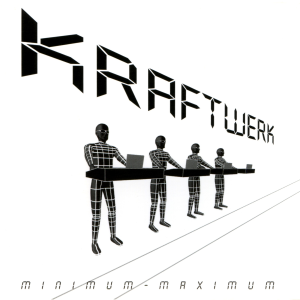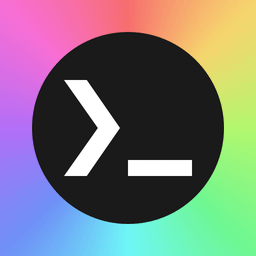

If my American university has a system in place for students that don’t own Windows, I would not be surprised if yours has a better one :)
Here to follow content related to Star Trek, Linux, open-source software, and anything else I like that happens to have a substantial Lemmy community for it.
Main fediverse account: @f00fc7c8@woem.space


If my American university has a system in place for students that don’t own Windows, I would not be surprised if yours has a better one :)


LibreOffice has opened every DOC(X) the school has sent me, albeit imperfectly, and all assignments are turned in as PDFs, which I usually make using Markdown and LaTeX. I have had to use Office 365 for collaboration, but only about twice a year, and that runs very smoothly in Firefox. On one occasion I tried to collaborate with CryptPad, but it didn’t work as well as I hoped.
Most computer labs at my uni run Windows 10, rarely 11, but a lot of the science labs run Linux. A surprising amount of the software required for classes has been open-source, too.
The most frustrating thing has been the lockdown browser used for some exams. My university library has computers I can borrow for exams, but yours might not, and they detect VMs, so you might have to dual boot for that.


Yeah, only thing I can think of is the few banking apps that don’t have web versions.
I was lucky enough to have all my banking and 2FA apps work perfectly on GrapheneOS. The only app that gave me a significant amount of trouble was iClicker, which my school uses for attendance. That was fixed by enabling Google Play location services, and there was a (fairly expensive) alternative anyway.
I did have to buy a new phone to use Graphene, because I got my previous one as part of a carrier’s cell plan, and it had a locked BIOS. Though I think the purchase was worth it, and just moving my SIM card from one device to another was enough to get it working.
of course not!


I don’t have much PC building experience, but these specs seem sufficient. Only comment is that you might need to use a distro with a new-ish kernel and graphics stack, given the very recent CPU and GPU. So not Debian stable, but Fedora, Ubuntu, or any rolling release distro will be fine.


For a while I daily drove a Purism Librem 14 with Debian’s fully free kernel, and installed as few non-free packages as possible, including firmware blobs (which I didn’t install any of until I decided I needed Bluetooth). My experience with gaming was generally fine.
With linux-libre you really have to buy your hardware specifically with support in mind. You’re limited to Intel and non-bleeding-edge AMD graphics cards, a very small range of wifi cards, and no Bluetooth. Otherwise, video games should work as well as they would on any other computers with the same specs. Especially if you’re also limiting yourself to games with free engines - I’m not aware of a single libre game that demands more than a modern Intel integrated graphics card can provide, even on high settings.
Yeah, it’s fake, and as other commenters have pointed out, it’s also inaccurate to how the GPLv2 works. It was not meant to convince anyone.


I came across a bunch of those recently, which is how I came up with the idea for this, as a parody :)
Internet horror is disappointingly un-creative. I have no idea why the weakest works (sonic.exe, anti-piracy, kill screens) always end up becoming huge trends, or why so few people try to put a significant twist on said trends.


Tons of companies are shipping Linux without giving users access to the source code, it’s just that only one has the term “Tivoization” named after it.


Where’d you get the OneShot Firefox icon?


I’ll probably use Codeberg or another Forgejo server for my next programming project, if/when I have one that is far enough along to publish (motivating myself to get that far is a tall task). Until then, everything I’d consider contributing to is either on GitHub, or is self-hosting some other software, so I don’t have a reason to create an account yet.
I have the same problem at my school, but thankfully, the school library has laptops I can borrow with the lockdown browser installed. It isn’t ideal, but is there a similar arrangement you could make?
Unlikely. While in theory someone could create a compatibility layer, it would be quite a challenge, as obviously, kernel modules are very closely tied to the specific kernel. I did some web searches, and only found the same few dead projects (that didn’t completely solve this issue anyway) that you found, and other forum posts that offer little encouragement.
Make sure you have the latest version of Windows 10 or 11, and the latest drivers for your network hardware. If you do, then there’s probably not much you can do about this.
What is a “must have” depends on your use case, personal preferences, and the shortcomings of your distro’s default configuration (I’ve never used Cachy so I don’t know what’s missing).
For myself, I usually end up installing VLC and Strawberry Media Player, since the media players most distros come with aren’t as good. On non-GNOME distros I tend to install GNOME Disks as it’s the least painful to use of the GUI partitioning tools I have used. My preferred rich text format is Markdown, for which I use ghostwriter. I also usually install a few FOSS games to pass the time with - my favorites are Freedoom, SuperTux, SuperTuxKart, and Xonotic - and RetroArch for emulation.


Bit confused about what you’re looking for. If you’re just SSH/VNC ing into devices on the same local network, then you can simply use their local IP address, which you can find with a command like ip addr and will rarely change, or their hostname if your network is configured properly. There are several GUIs that can remember connection info for you, so you likely will only need it once. It’s also quite easy to scan the local network for SSH servers if you have nmap (nmap -p22 <your ip address range, e.g. 192.168.0.1/24>). If you need to connect to a device on your home network from a different network, any VPN software can achieve that. I’m not aware of any remote desktop solution that doesn’t require a network connection, but your network doesn’t necessarily need to be connected to the Internet.
Are you looking for a GUI that combines all those things?
Doom was officially ported to Linux in 1994, and a modified version of Linux Doom was made source-available in 1997, then open-source (GPLv2) in 1999. It was one of the first high-quality open-source games. Those versions do not work on current Linux distros, but they have enabled modern source ports such as PrBoom+ and Chocolate Doom to be developed, and those are available in nearly every distro’s repository.


The website claims that sponsors have no direct influence on the project (“board seats are not for sale”). The reality is that no project of sufficient scale to fully implement web standards can survive without a significant amount of funding.


It’s very new. Previously the system would just drop to a console with a message saying “Kernel panic: not syncing: [reason]” and a whole bunch of debug info.
But still, on a well-maintained system, that pretty much never happens. Mainly because Linux is significantly more resilient to faults in device drivers than Windows.
It’s nice that major news outlets are saying what we nerds have been screaming for the past two decades. Microsoft only shares a small portion of the blame for the recent outage (they could have built their OS better so software vendors don’t feel the need to use kernel modules, but the rest is on CrowdStrike) but we are too depenent on them.